
One of the best Kirby games isn’t a traditional Kirby game at all. Long before Kirby and the Forgotten Land finally worked out how the game should work in three dimensions, there was Kirby Air Ride, a Gamecube racing game that’s so weird. Kirby tools around on the Warp Stars that are his trademark ride through a number of courses at speeds usually only seen in an F-Zero game. There’s a variety of stars that can be ridden, more to unlock, it was the second game in which Meta Knight was fully playable, and the first where King Dedede was (unless you count short sequences in Kirby 64).
Kirby Air Ride had three modes, but they all felt a bit half-baked except for one. The standard Air Ride mode wasn’t bad, but could only be played one course at a time, with no overarching mode that connected them. That’s right, it didn’t have a “Grand Prix” mode. And the other competitors were only differently-colored Kirbys (Kirbies?) anyway. The courses were pretty good, but it didn’t give you much to keep you playing except for its checklist (which we’ll get to).
There was also a special racing mode that took place from an overhead view, on special one-screen courses, like Atari’s Sprint games, which felt even less substantive than the standard racing mode.
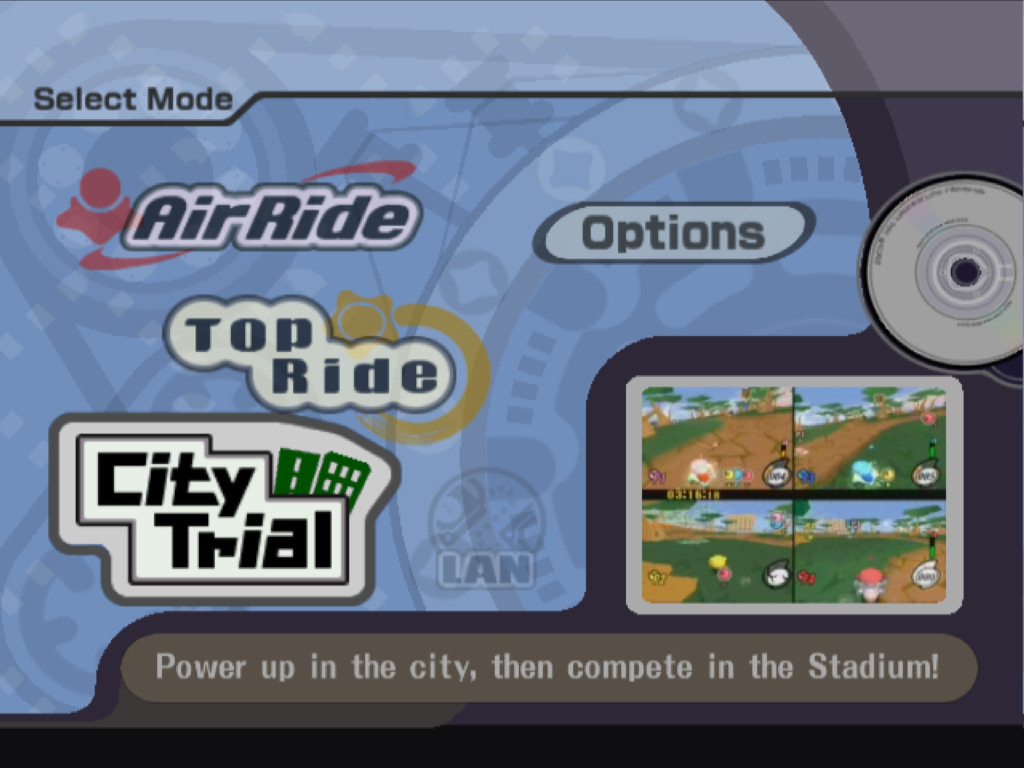
But the reason Kirby Air Ride is special, and the reason I still have my copy of the game after all these years, is City Trial, which is one of the most engaging racing game experiences I’ve ever seen. It’s really good. Not because it has any overarching structure the other modes lack (other than its checkbox screen). But because it’s so novel; no other game I can think of provides the kind of gameplay that City Trial does, unless you count Smash Run from the 3DS version of Super Smash Bros., which was also made by Masahiro Sakauri. But even it isn’t really the same thing, because you can’t interact with the other players during it!

City Trial puts from one to four players, either human-played or computer-controlled, in a free-roaming city area. It’s not really a “race” at all. While the city is, spatially, quite large, the players’ warp stars are so fast that it only takes about 20 or so seconds from one end to the other, and the game also keeps you appraised of where the other Kirbys are with on-screen indicators and a map in the corner. Over a period of between three to seven minutes, you zoom around trying to collect powerups for your star. They come in a variety of types: Top Speed, Acceleration, Charge, Turning, Gliding, Weight and more, all taking the form of 2D icons scattered randomly around the city.
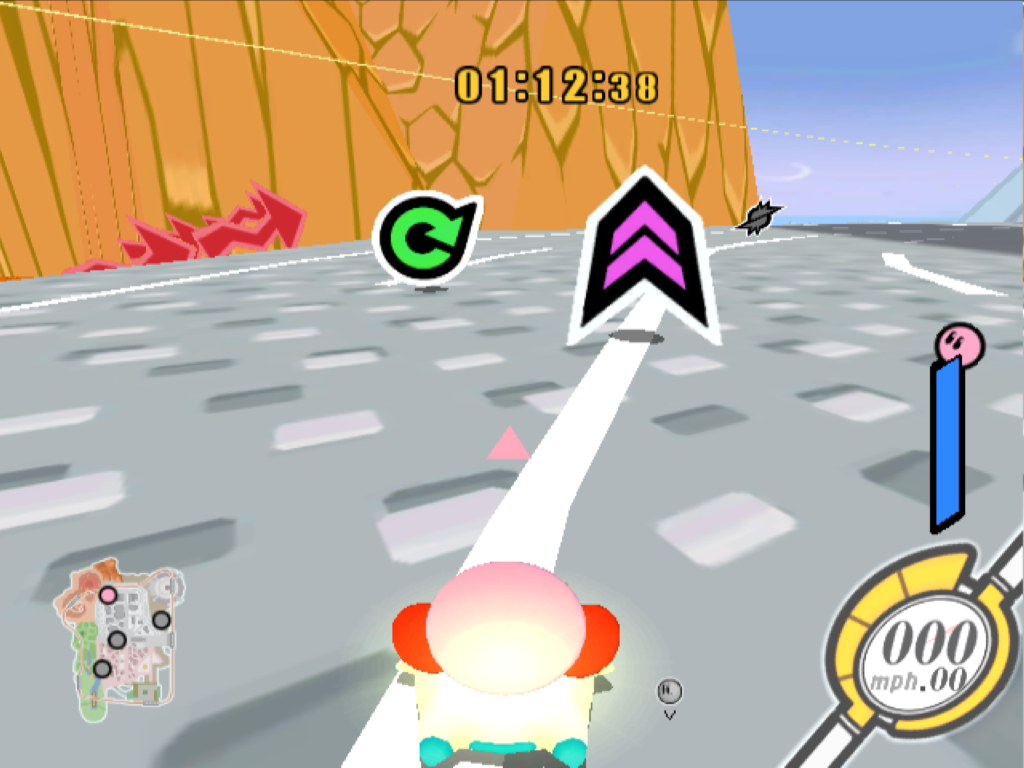
As you collect icons, each provides a small permanent (for the duration of the match) improvement in that one area of your star’s performance. Some are in boxes, which must be broken apart either by colliding with them repeatedly or spin attacks. Some of them are gray-colored, which are permanent power-downs.
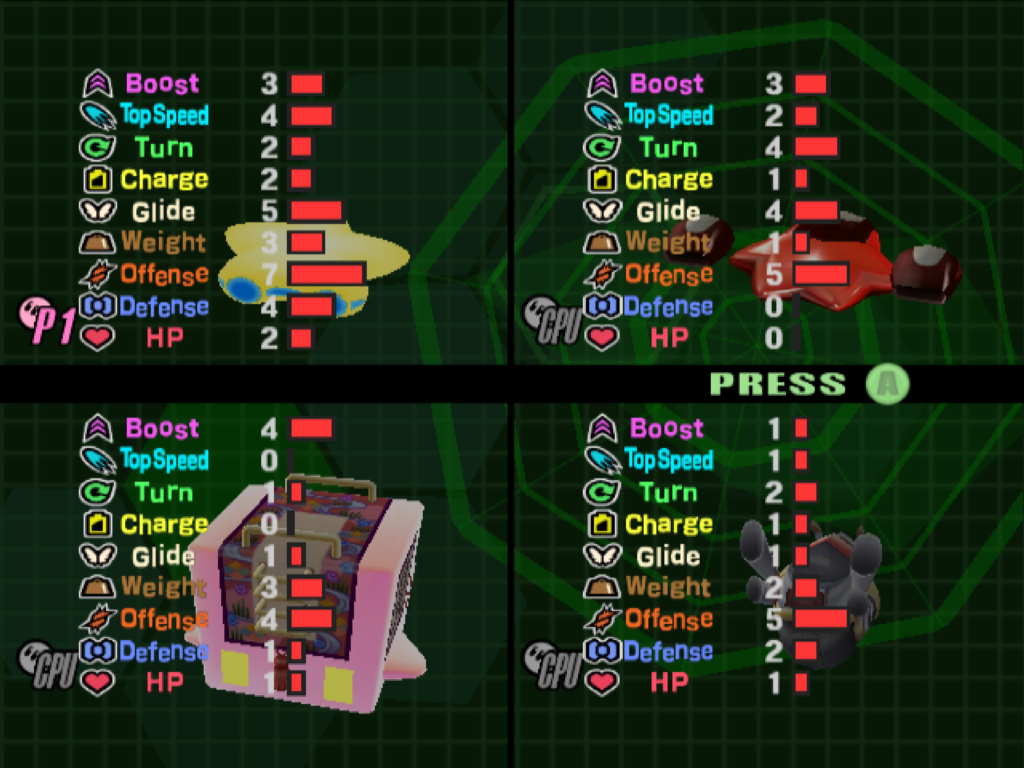
Throughout the time limit, you seek out and collect as many as you can. If there is a maximum stat you can reach I’ve never seen it; I think it can go at least as high as 20 icon’s worth, but it’s nearly impossible to get that high. It’s gratifying to feel your default “Compact Star” get steadily better and better as you snatch powerups. But also, there are other vehicles throughout the city, and you can get off your default star at any time by holding down on the control stick and the A button and board another one. All of the varied stars from Air Ride mode (some of which aren’t really stars at all) are present, and they all control really differently from each other. Some even have special properties, it’s not a case at all of them just having different stats. When you switch stars, you get to take all of your collected powerups with you, though if you have a lot you’ll drop some, and have to spend a few seconds picking them back up again.
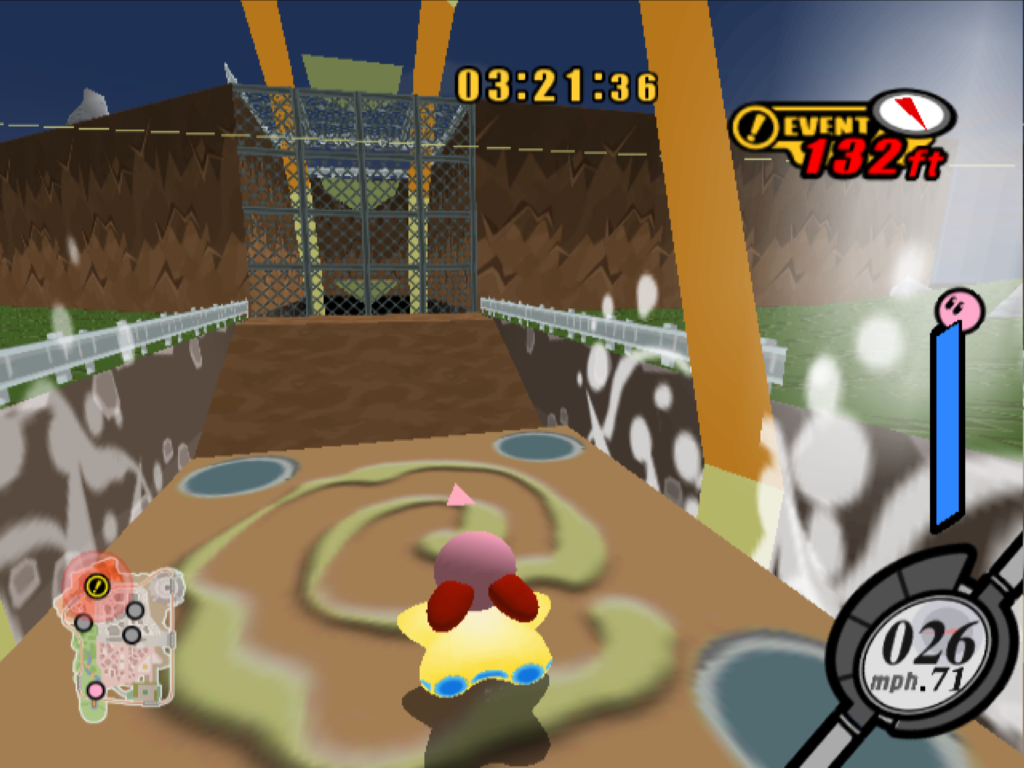
The amount of care that went into this one mode is almost shocking. You can attack other players and steal their powerups! You can even destroy their warp star, and force them to wander around on foot to find a replacement! Some of the traditional Kirby copy abilities can be found and used against the other players! There’s random events, with a lot of variety, that can happen, providing different dangers, or opportunities. You can sail out over the ocean on your hovering star. If you get enough height, you can fly over the invisible border wall and explore even more ocean.
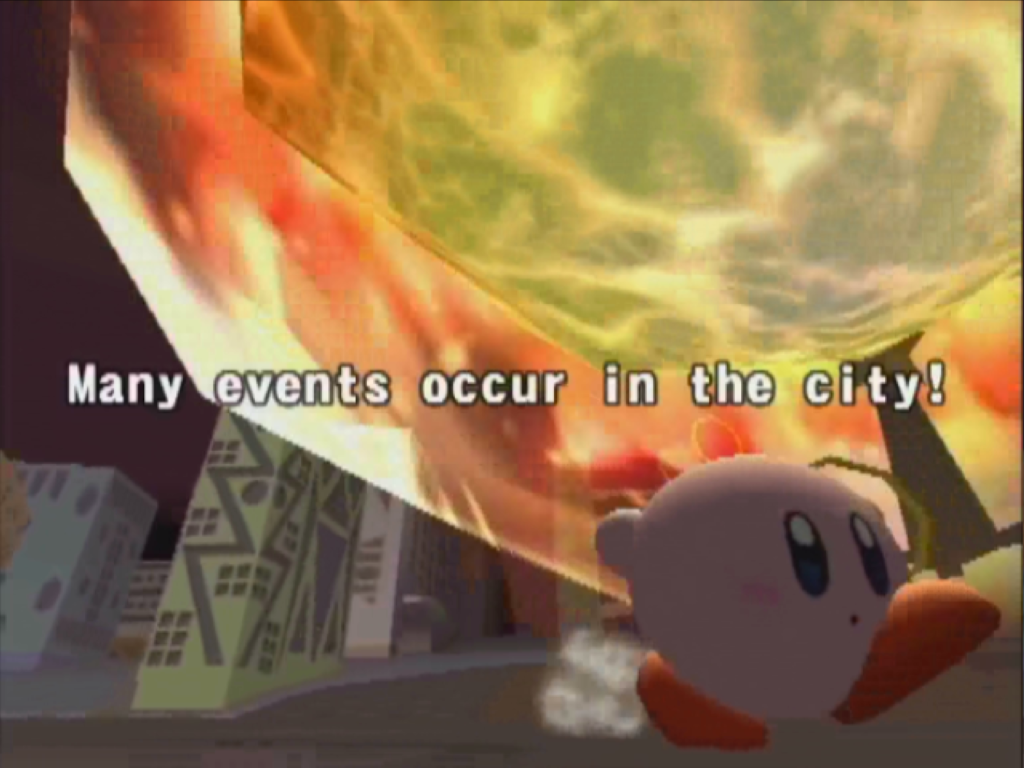
You can also collect Legendary Machine parts, which are hidden in some of the boxes. The Hydra, from the more recent Super Smash Bros. games, is a direct reference to this. If you manage to find all three parts, to either the Hydra (the green one) or the Dragoon (the red one), you get to ride it. They’re both ludicrously overpowered, although they can also be difficult to control.
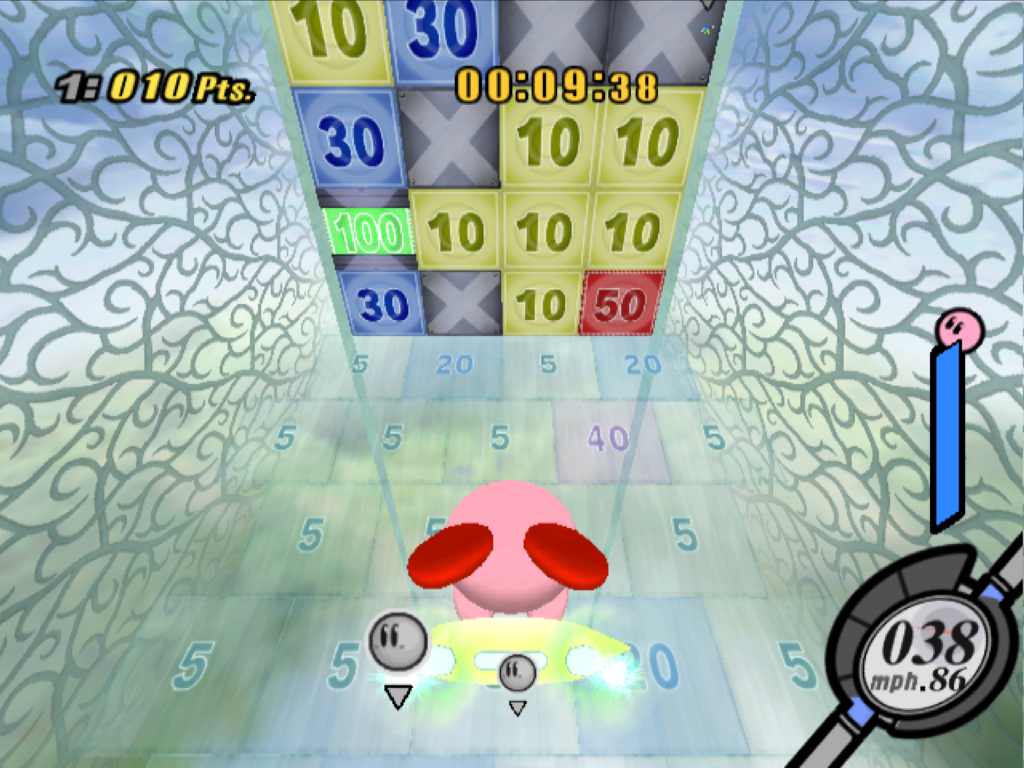
The real mark of genius in this mode is what happens when time runs out. The game shows a chart with everyone’s vehicle stats on it, then throws all the players into a random event. Your vehicle’s stats may make this event easy or hard! If you end up in an event where you have to attack enemies or aim to collide with targets, you might find yourself wishing you had laid off getting all those speed-ups, but plenty of the events are races too, including all of the race courses from Air Ride mode. How do you know what kind of event it coming up? There are two ways: sometimes, during the City Trial portion, the game will drop you a text hint as a message. (Hilariously, once in a great while it lies.) Or else, if you don’t like the randomness, you can choose broadly what kind of event will happen in the game settings.
Whichever player comes out on top in the event, the victory is short-lived. There is no huge victory celebration, no advantage to be gained. The game doesn’t even save player profiles. But City Trial mode is entertaining enough that we don’t really end up caring much? It’s even fun to play against computer opponents.
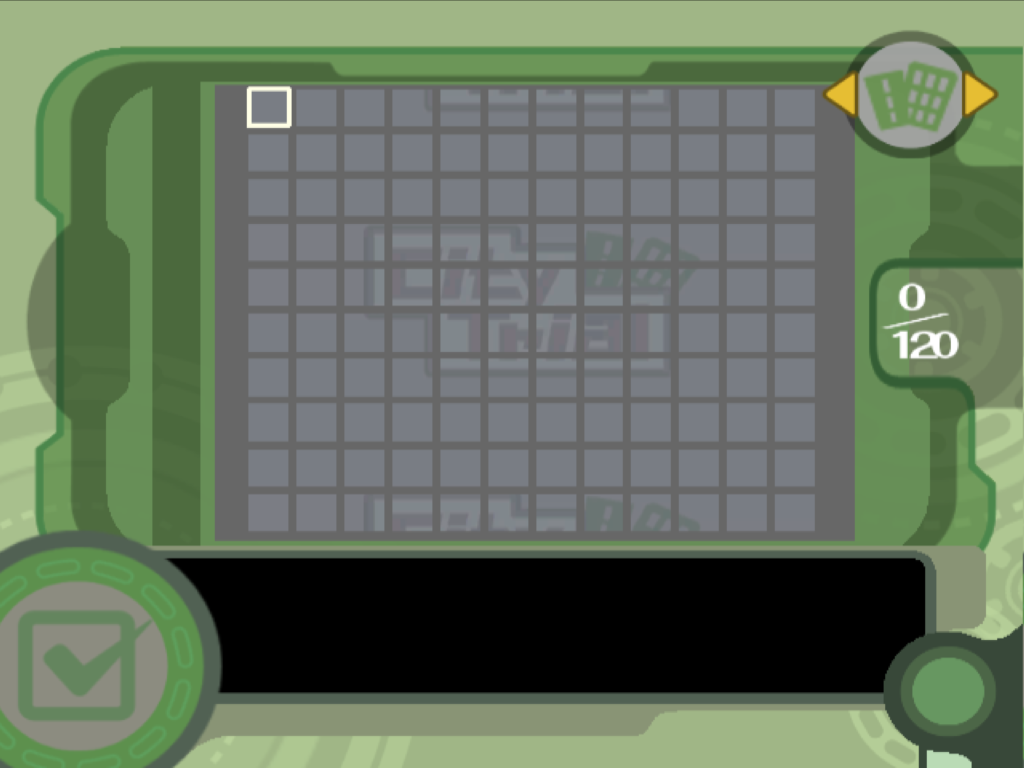
Each of the three modes in Kirby Air Ride has a “checklist,” a grid of squares, each representing some accomplishment, or at least occurrence, that can happen in its game. This is the closest thing Air Ride has to progression. If you’ve seen the Challenges in Super Smash Bros. Ultimate, this is the same kind of thing. All of the challenges are hidden at first, but when you unlock one, the requirements for the ones around it are revealed to you. Some of the boxes unlock things, like new events, being able to play as Meta Knight or Dedede in the practice mode, or more Kirby colors. But mostly it’s just something to give obsessive players (like myself) something to work for. In a racing game without even a Grand Prix mode (seriously what is up with that?), I’ll take what I can get.
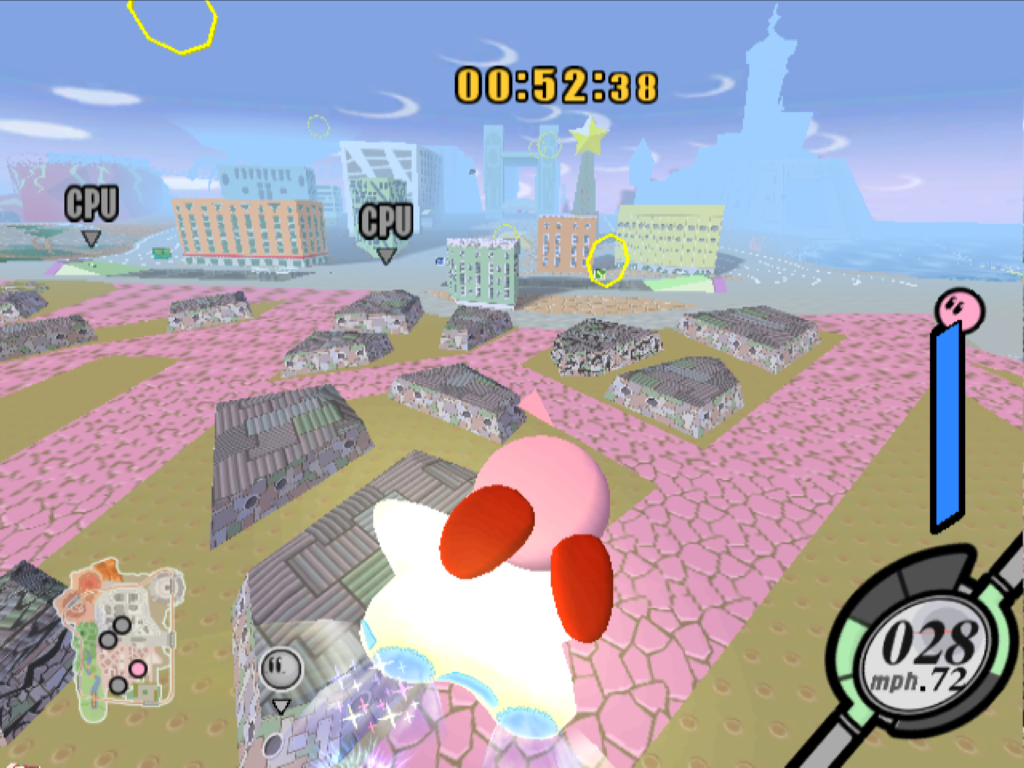
One more cool thing? Until fairly recently (and ignoring that non-canonical anime series), City Trial was our only glimpse into what day-to-day life was like in Dream Land. This city is evidently where Kirby and his friends live and play (I don’t think any of them have a job). There’s skyscrapers, a river, an ocean, an underground region, mass transit rails, a golf course (overseen by Wispy Woods), a castle and a volcano, and even “dilapidated houses,” which the players can demolish with their vehicles. I guess even Planet Popstar has a seedy part of its towns.
Apparently, day-to-day life in Kirbyland is spent in endless vehicular combat sessions. I’d like to say that I’m surprised, but for some reason, I’m not.
If you’d like to see how this works out in play, here’s an hour and 54 minutes of City Trial play, without commentary, on Youtube:
